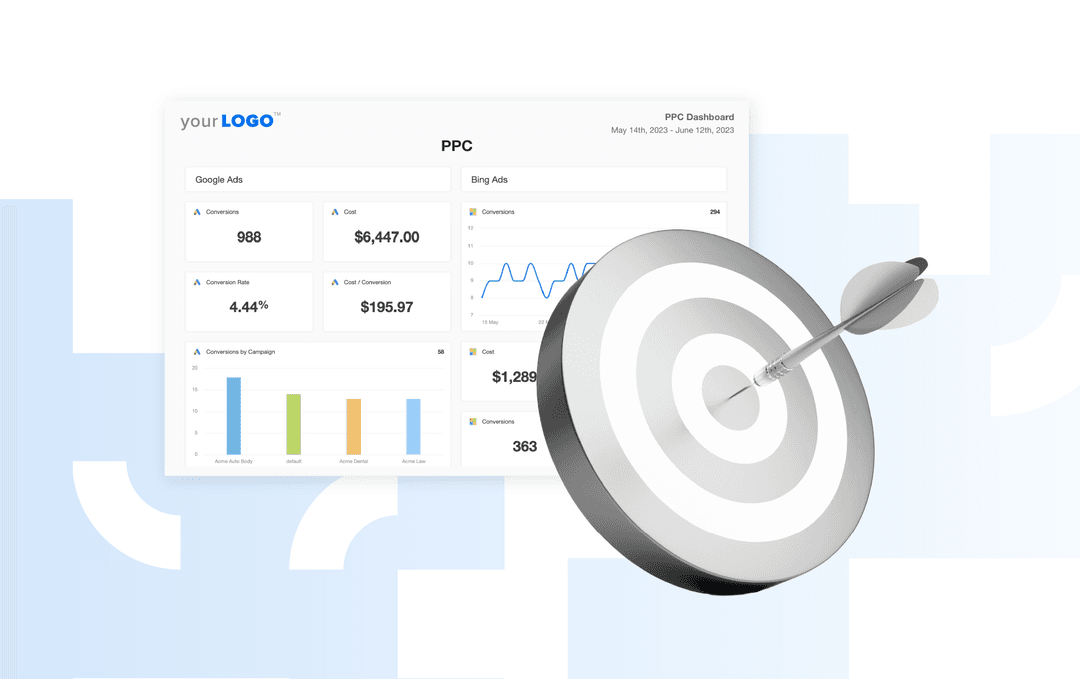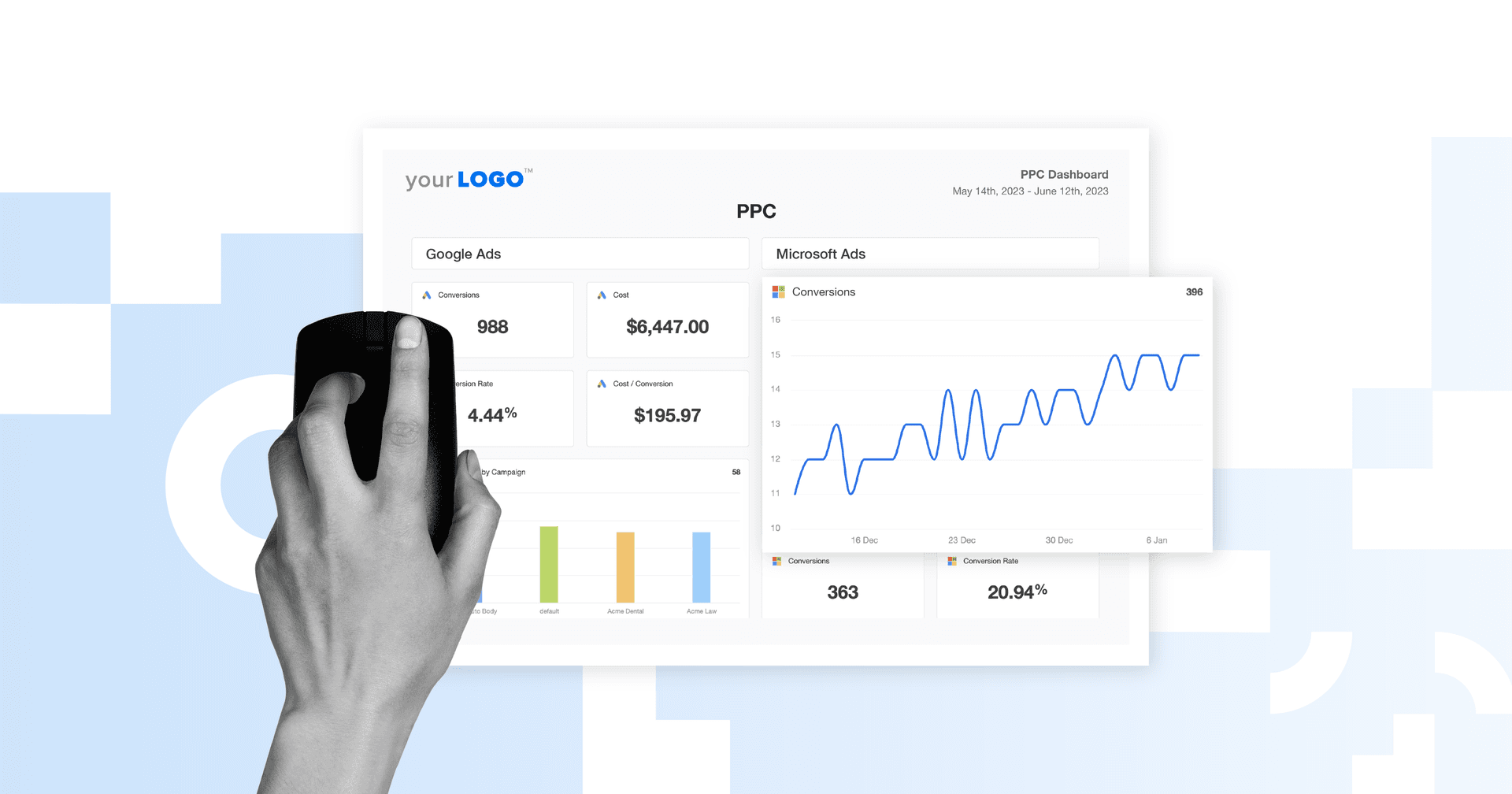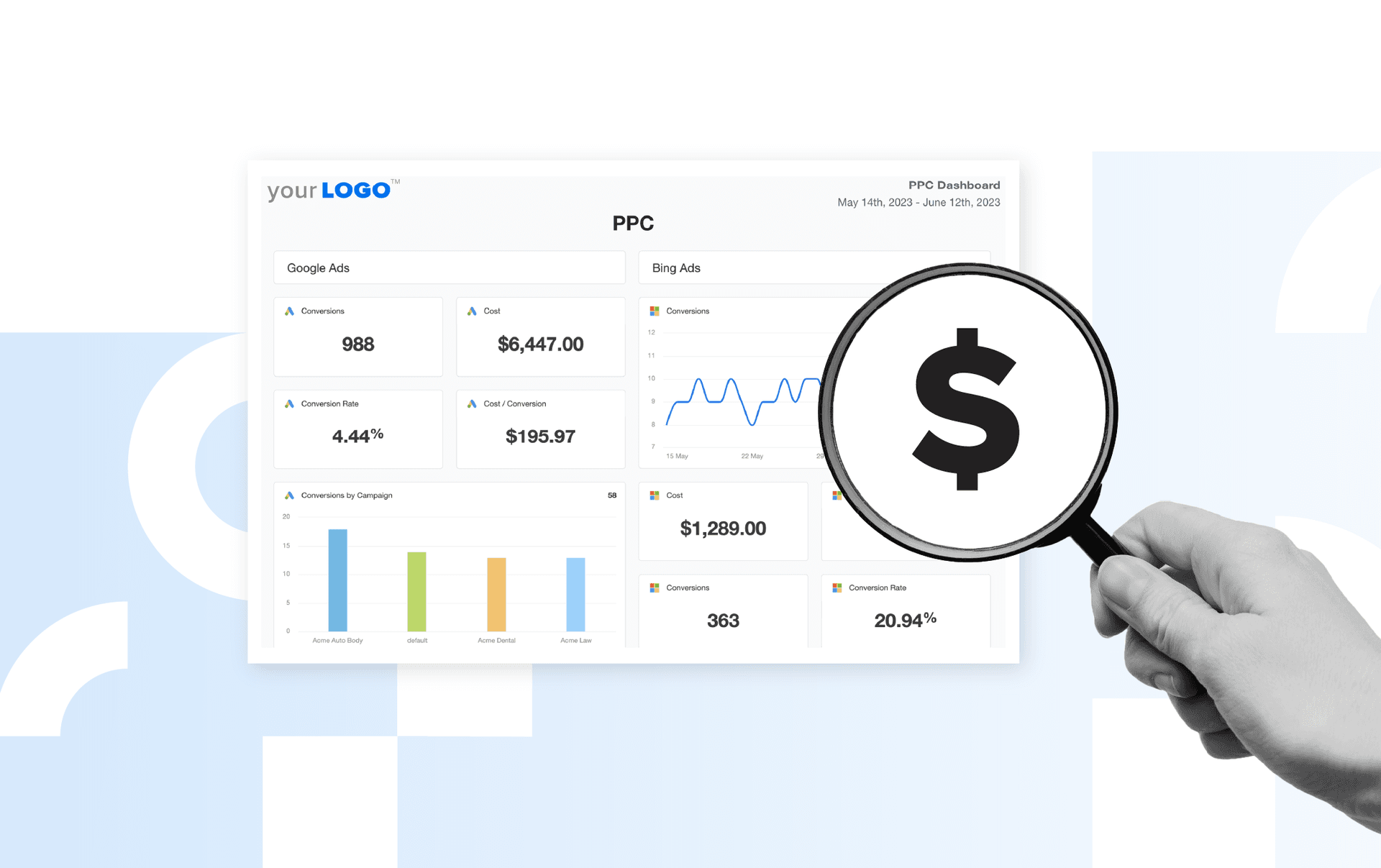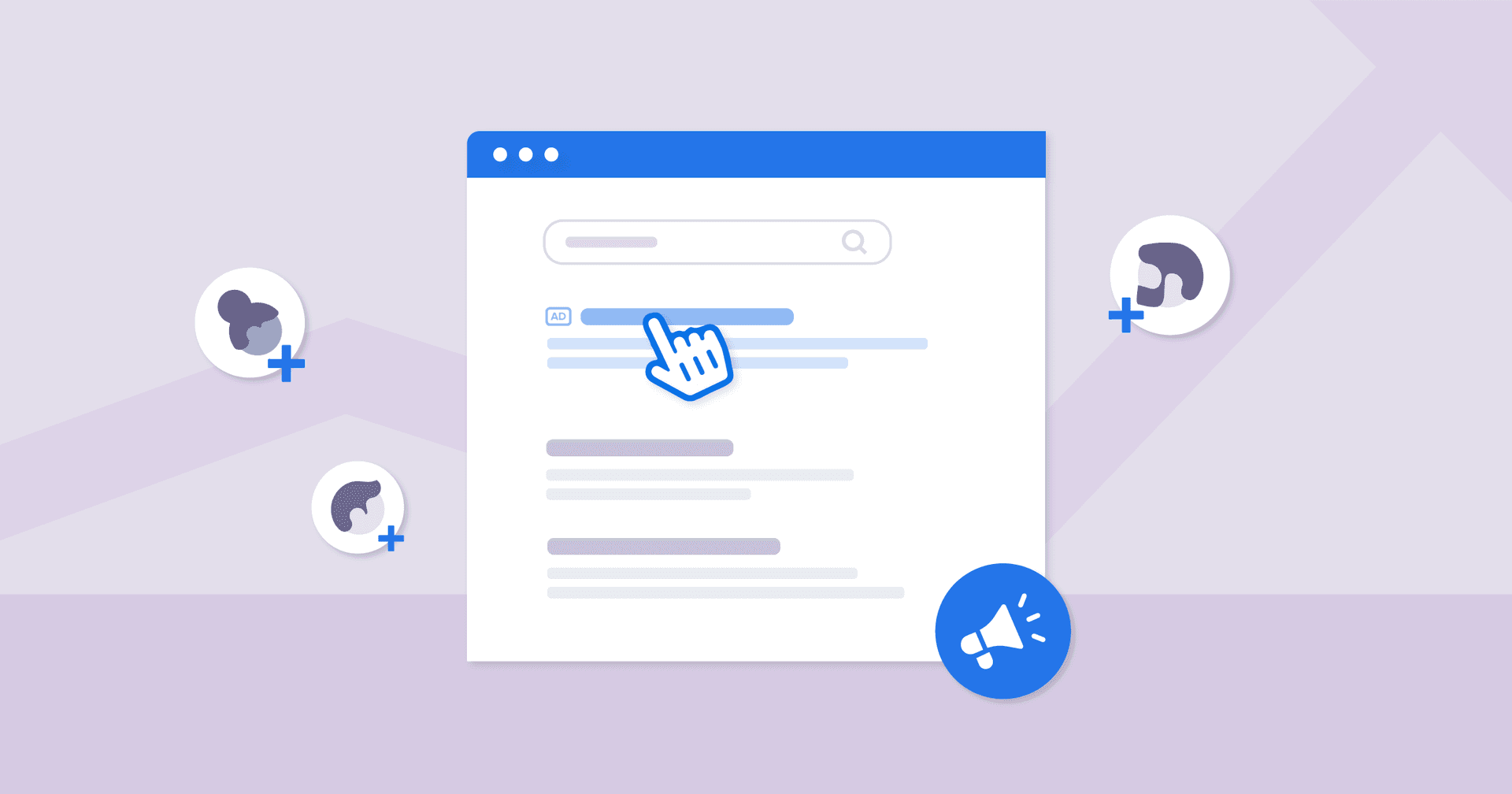Table of Contents
QUICK SUMMARY:
This article explores the ins and outs of PPC remarketing and how to successfully implement remarketing best practices. Learn about audience segmentation, bidding strategies, and how to create ads encouraging users to engage. Follow these tips to turn leads into loyal customers.
You’ve successfully managed to create ads for your clients that are getting engagement from prospects, which is a huge win! But what happens when they click the ad and browse your client’s website, but don’t convert?
PPC remarketing keeps your client top of mind, reinforces their value proposition, and prompts them to take action. Done right, remarketing turns missed opportunities into measurable results, allowing your agency to maximize your client’s ad spend and deliver better ROI.
In this guide, we’ll break down how PPC remarketing works and share best practices you can implement for your clients so every campaign gets results.
What is PPC remarketing?
Pay-per-click (PPC) advertising refers to paid marketing campaigns across platforms like Google, LinkedIn, and Instagram–anywhere you pay to put a brand in front of the right audience.
Remarketing is a strategy designed to re-engage people who’ve already interacted with your client’s business. These potential customers might have:
Searched for your client’s brand on Google
Clicked on a paid ad
Browsed a product page
Abandoned their shopping cart
Completed a previous purchase
By staying visible to these warm leads, remarketing keeps your client’s brand top of mind and nudges them closer to conversion.
But for ads to be effective, you need the right strategy.
Think of it this way: a potential client is looking for an auto repair shop they can trust. They land on your client’s website through a Google search and spend time browsing; they’re especially drawn to your client’s brake repair and preventative maintenance services. They like what they see, but they’re not quite ready to schedule a service. The idea lingers–a seed is planted.
The next day, they see your client’s shop pop up in a LinkedIn ad. That’s no accident–it’s remarketing in action. Because they’ve already engaged with your client’s brand, the ad doesn’t feel random or intrusive. Instead, it reinforces a connection. Suddenly, your client is top of mind again.
A well-placed remarketing ad can be the nudge that turns initial interest into action.
While LinkedIn remarketing is powerful for B2B lead gen, CPCs can be significantly higher than Meta or Google. Agencies should align platform choice with CAC and lead value.
Saku Fadiga, Senior PPC Specialist, AgencyAnalytics
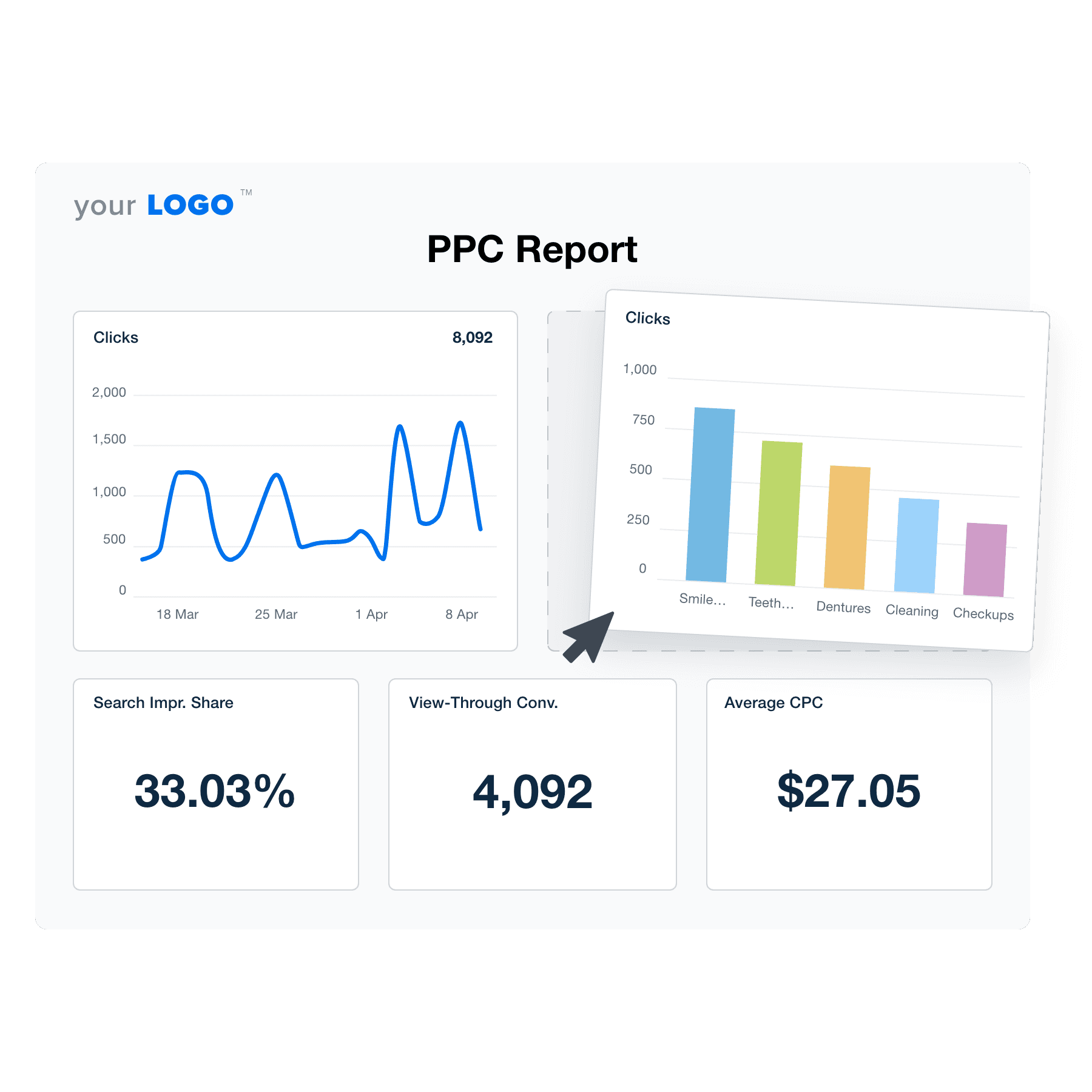
See the difference data-driven decisions make. Try AgencyAnalytics' PPC reporting tool and get clarity and control over every client campaign. Start your free 14-day trial now!
How PPC remarketing works
When someone visits your client’s website, it’s a sign they might be in the market for what they offer. Visiting their site is a first step, but the context (traffic source, engagement, behavior) matters more.
Site visitors might not be ready to buy just yet, but they’ve entered your client’s orbit. Remarketing is how you keep them there. It lets you re-engage users who’ve already interacted with your client’s site, reminding them of their brand through tailored ads, email follow-ups, or even that perfectly timed LinkedIn placement.
The ability to identify your ideal customer and remarket to that specific segment is extremely lucrative to high-volume agencies within a specialized industry.
Adrian Rivera, Director of Marketing, Advanced Outdoor Solutions
By tapping into remarketing campaigns and smart audience targeting, your agency will boost conversion rates, stretch your client’s ad budget further, and keep them top of mind when it matters. Close the loop with PPC report automation so results are summarized for clients automatically. Pair that with marketing attribution models to better understand which touchpoints are driving conversions and how to allocate your client’s budget more effectively.
Here’s a closer look at how PPC remarketing works:
1. Audience tracking
A remarketing tag (or pixel) is installed from platforms like Google Ads, Facebook Ads, or LinkedIn Ads on your client’s website or app. This pixel tracks visitors and adds them to custom audiences based on behavior cues like:
Pages visited
Time spent on site
Actions taken (or not taken)
Previous purchases
2. Audience segmentation
Next, the audience is broken into specific groups so your agency can tailor the messaging they’ll receive. These segments might look like:
Cart abandoners: Messaging may include ads reminding them of their product, or a discount code.
Past purchasers: Upsell or cross-sell messaging works well here.
Page visitors: Here there’s an opportunity to drive them back to specific pages with tailored offers.
3. Targeting and creative
Using this information, messaging is highly personalized based on past behavior. These customers may be served paid ads, or receive a specific email nurturing sequence to encourage specific conversion behavior.
Dynamic remarketing ads show the exact product the person viewed.
Seasonal offers are sent to past customers.
Urgency-driven messages (“Only 2 left in stock!”) are effective levers.
4. Ad placement
From here, ads follow users across:
Search networks: Google Search ads are triggered when they search related terms again.
Display networks: Banner ads are displayed on other websites.
Social platforms: Ads may appear on Facebook, Instagram, LinkedIn, or TikTok.
Facebook advertising is important for businesses as the Meta company (and thus Facebook or Meta Ads) enables business owners to advertise across all Meta platforms. Additionally, it's a great way to remarket to your audiences in a place that feels natural to them.
Joeri, Head of SEO and Marketing, Succeed Digital
5. Conversion tracking and optimization
As the remarketing campaign rolls out, your agency measures performance by tracking clicks, conversions, and ROI for each audience segment. Importing offline conversions from the client’s CRM into Google and Facebook will improve remarketing targeting quality by focusing on high-quality leads.
Some common optimizations include:
Frequency capping to avoid ad fatigue.
Adjusting bids for high-intent audiences.
Testing ad creatives for better CTR and conversion rates.
Advanced measurement tactics like incrementality tests, holdout groups, and geo-split testing will also help agencies to prove that remarketing is actually driving net-new conversions.
Saku Fadiga, Senior PPC Specialist, AgencyAnalytics
Agency tip: Remarketing requires cookie consent under GDPR/CCPA. Agencies should make sure they are compliant before running campaigns.
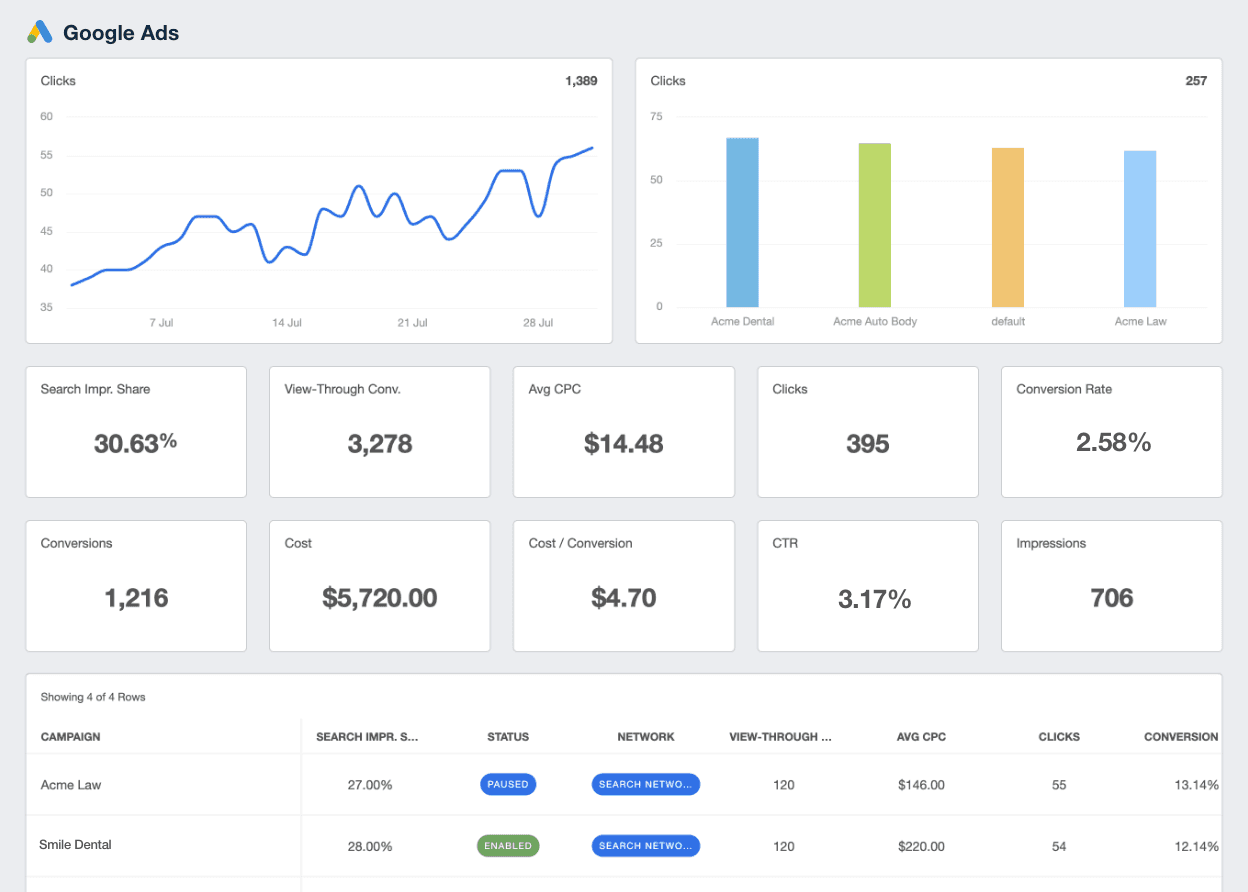
Track every step of your PPC campaigns and connect your paid efforts to organic social, SEO, and email with 80+ integrations. Try AgencyAnalytics free for 14 days!
What's the difference between PPC remarketing vs. PPC retargeting?
Both remarketing and retargeting involve re-engaging potential customers. While the terms are often used interchangeably, they do have different meanings.
When we say retargeting, we’re talking about serving ads to people who have visited specific pages of your client’s website.
This requires setting up tracking tags on your client’s website that track website visitors along with specific rules for each type of visitor. For example, you might use LinkedIn to target everyone who lands on a certain landing page but doesn’t fill it in. So, the next time they’re on LinkedIn, they’ll see your client’s ad, reminding them of the benefits of their offer with a link back to the landing page.
Retargeting is a great way to get more people to become contacts, progressing these leads through the buyers journey and bridging gaps in your client’s marketing funnel.
Remarketing refers more broadly to a multichannel approach, in which prospects are nurtured through a combination of ads and other efforts like follow-up emails–all parts of your client marketing efforts. Email nurturing sequences target a client’s potential leads or existing customers to build trust, drive engagement, and encourage repeat business. Remarketing efforts are all about nurturing customer relationships further up the funnel and building long-term customer loyalty.
For example, you get a lead’s details because they’ve downloaded an offer from your client’s website. You use that information to follow up with them, keeping them updated on similar products or services and special offers.
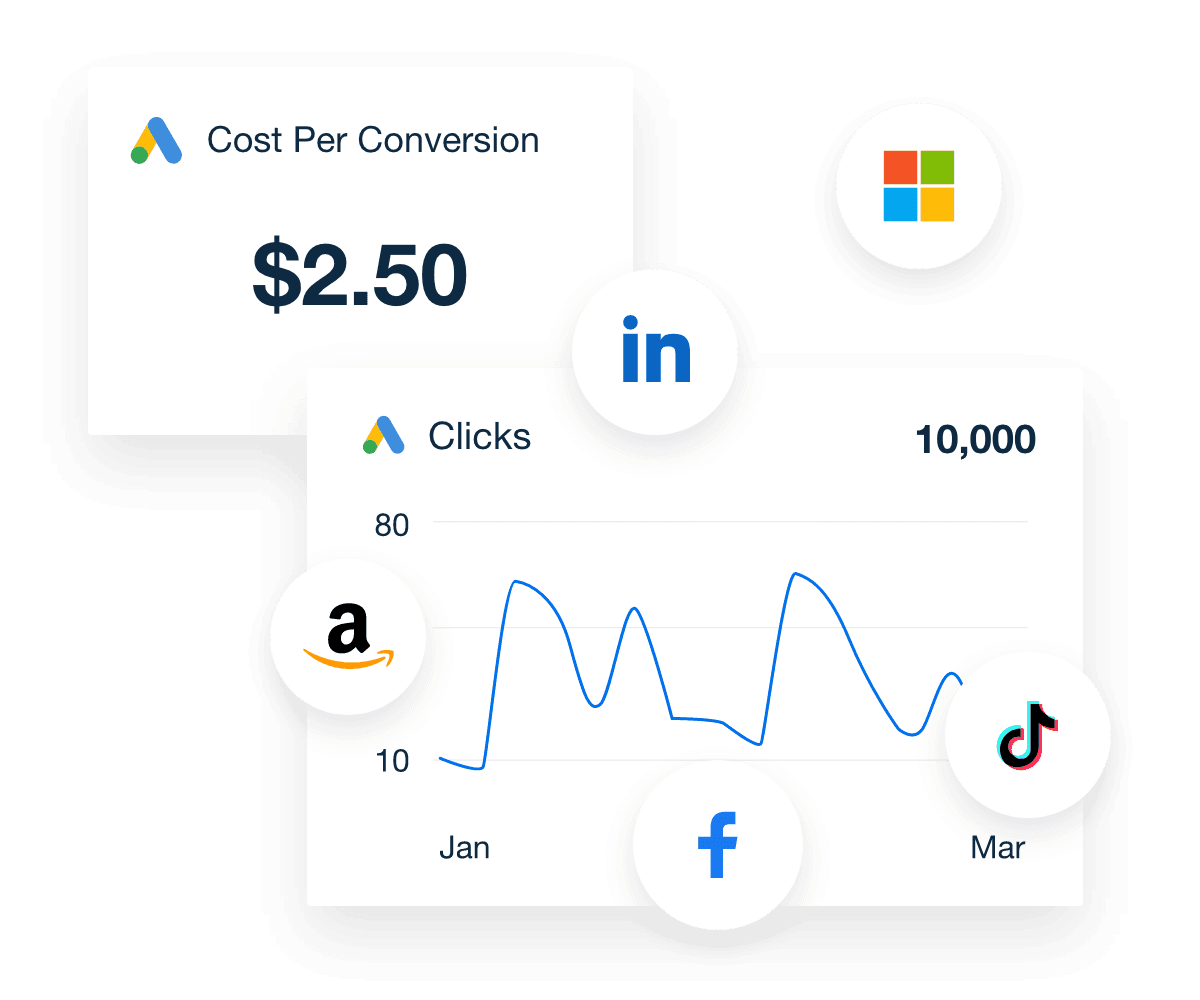
Track clicks, impressions, conversion rates, and CPC across multiple ad platforms and ad campaigns with AgencyAnalytics' PPC reporting tool. Start your free 14-day trial now!
Best practices for effective PPC remarketing
PPC remarketing gives your client a second chance at customer acquisition. It’s a key part of smart PPC management and should be baked into your clients’ broader strategy, not just tacked on as an afterthought.
Here’s how to make it count:
Audience segmentation
Remarketing works best when you tailor your message to match where someone left off. Smart segmentation helps you get specific. Create custom audiences based on user behavior. Here’s how:
Page-level behavior: Create different lists for visitors who browsed your client’s pricing page, blog, or service pages. Each has a different intent and requires a different follow-up.
Time on site: Someone who spent 5+ minutes on your client’s site is warmer than someone who bounced after 10 seconds.
Cart abandoners: They were this close to making a purchase–nudge them back with urgency or incentives.
Repeat visitors: These users are showing deeper interest. Serve them content that builds trust and moves them closer to becoming paying customers.
The more precise your segments, the more relevant and effective your client’s ads become.
We use broad targeting with automated campaign optimisation over time, which hones in the targeting and bidding to reach the right users at the right time. With eCommerce activity, usually catalog ads work best, both from an Acquisition and Remarketing standpoint. Promo offers are essential for capturing user attention and driving demand for products.
Josh Sexton, Digital Performance Director, Sprocket Digital
Ad creative tips
When it comes to ad creative, don’t be afraid to take risks. Not everyone fits the profile of the audience you’re targeting, and that’s okay. The worst thing you can do is play it safe and try to appeal to everyone, as you’ll almost certainly end up just blending into the background.
Here are some tips to help create targeted ads that help your client stand out and make an impression:
Match the message to the moment: Reflect what the user last saw, whether it was a product, a service, or a blog post. Continuity builds trust.
Add urgency: Limited time offers or low stock notices can tip someone from “maybe” to “yes.”
Use dynamic ads: Dynamic remarketing delivers customized ads that showcase the exact products or services users previously viewed, making your client’s ads feel relevant and timely.
Keep visuals fresh: Avoid ad fatigue by rotating visuals and copy regularly.
Test, test, test: A/B test different headlines, images, CTAs, and ad formats to see what clicks with target users.
Bidding strategies
Your bidding approach should reflect how valuable each audience segment is. Here’s how to make the most of your ad spend:
Use target CPA for conversion-ready segments: For high-intent audiences (like cart abandoners), targeting Cost Per Action ensures you're not overspending on conversions.
Maximize clicks for cold-to-warm audiences: If you’re just starting to warm up your client’s site visitors, a Maximize Clicks strategy can drive traffic efficiently. That said, for warm remarketing audiences, Maximize Conversions (with a CPA cap) is usually more efficient once there’s enough conversion volume. Maximize Clicks will sometimes bring irrelevant traffic if left running for too long,
RLSA for strategic search re-entry: Remarketing Lists for Search Ads let you adjust bids when previous visitors search again, giving you a second chance to close the deal. It’s also worth noting that Google Search remarketing lists require a minimum of 1000 active users before ads can be served, which is important for smaller audiences.
Adjust bids by segment: Someone who visited a high-value page deserves a higher bid than someone who bounced in 3 seconds. Prioritize accordingly. A dedicated PPC dashboard helps you monitor these audience segments and adjust your strategy in real time.
Google Ads remarketing features
Google Ads offers a powerful suite of remarketing tools that help you stay connected with your client’s potential customers long after they’ve left their site. With Google Ads' flexible remarketing options, you can build campaigns that feel timely, relevant, and personalized without coming across as pushy.
At the heart of it all is the Google Ads remarketing tag–a simple snippet of code that tracks user behavior on your client’s site and helps you build targeted remarketing audiences.
Here’s what you can do with it:
Standard remarketing: Show ads to past visitors as they browse websites and apps on the Google Display Network. Great for keeping your client’s brand visible while they surf the web.
Dynamic remarketing: Take it a step further and create personalized ads featuring products or services they viewed on your client’s site.
Remarketing Lists for Search Ads (RLSA): Customize your client’s search ads and bids for users who’ve already visited your client’s site. This way, you’re prioritizing people who are already familiar with their brand when they’re actively searching on Google.
Video remarketing: Re-engage users who interacted with your client’s YouTube videos or channel. Whether they watched a product demo or skipped halfway through, serve up relevant video ads as they continue exploring YouTube or the Display Network.
Customer match: Upload your client’s customer email list and reach those users across Search, Shopping, Gmail, YouTube, and Display. It's a smart way to re-engage existing leads or upsell current customers.
App remarketing: Target people who have used your client’s mobile app but haven’t taken a specific action yet, like completing a purchase or signing up for a service.
Agency tip: Use a Google Ads optimization checklist to ensure your remarketing campaigns are fully dialed in, from audience setup to bidding strategies and creative refresh cycles.
Common PPC remarketing mistakes to avoid
Remarketing is a wildly effective tactic–but only if done right. Without a thoughtful strategy, you risk annoying your client’s audience or wasting ad spend. Here are some common pitfalls to steer clear of:
Going too broad: Targeting everyone who lands on your client’s site with the same ad is a fast track to irrelevance. Segment your client’s audiences based on behavior–like pages viewed or time on site–for more personalized, effective follow-ups.
Ignoring frequency caps: Just because someone clicked once doesn’t mean they want to see your client’s ad 47 times a day. Set frequency caps to avoid ad fatigue and putting people off by being overly persistent.
Forgetting to exclude converters: Nothing’s more awkward than continuing to advertise to someone who already bought from your client. Exclude converted users from your remarketing lists to save budget and avoid confusion.
Using generic creative: If a client’s ad copy or creative doesn’t reflect what their visitor actually looked at, it won’t resonate. Use dynamic remarketing when possible, or tailor ad content to align with their past activity.
Not tracking conversions properly: Without accurate conversion tracking, you’re flying blind. Make sure your client’s tags and goals are set up correctly so you can measure what’s working, and what’s not. Using a well-designed PPC report template will help you visualize this data clearly and spot trends.
Running the same stale ads: If your client’s remarketing ads feel outdated, they’ll get ignored. Refresh creatives regularly to keep things fresh and avoid banner blindness.
Maximize your marketing strategy with smarter remarketing
To run effective retargeting campaigns, you need visibility. With AgencyAnalytics, connect your clients’ advertising platforms, track all paid search analytics, and monitor customer retention efforts from one intuitive dashboard at your PPC agency.
Whether you’re analyzing Instagram ads, carousel ads for an online shoe store, or text ads driving pay-per-click traffic, AgencyAnalytics gives you the data to create highly relevant ads based on real-time performance.
From tracking code performance to building custom audiences with Google Analytics insights, AgencyAnalytics helps agencies implement remarketing strategies with confidence. Use it to refine your clients’ online advertising strategy, create engaging ads, boost brand visibility, and turn web visitors into repeat customers faster and more efficiently than ever.
AgencyAnalytics helps digital marketing agencies land and retain clients by monitoring pay per click advertising performance. Easily track clicks, conversions, and customer acquisition from retargeting campaigns all in one platform. Try it free for 14 days!

Written by
Anya Leibovitch is a B2B SaaS content marketing specialist. She partners with tech companies to design and execute their content marketing strategy. A writer first and foremost, she harnesses the power of storytelling to build and strengthen relationships between companies and the clients they serve.
Read more posts by Anya LeibovitchSee how 7,000+ marketing agencies help clients win
Free 14-day trial. No credit card required.


